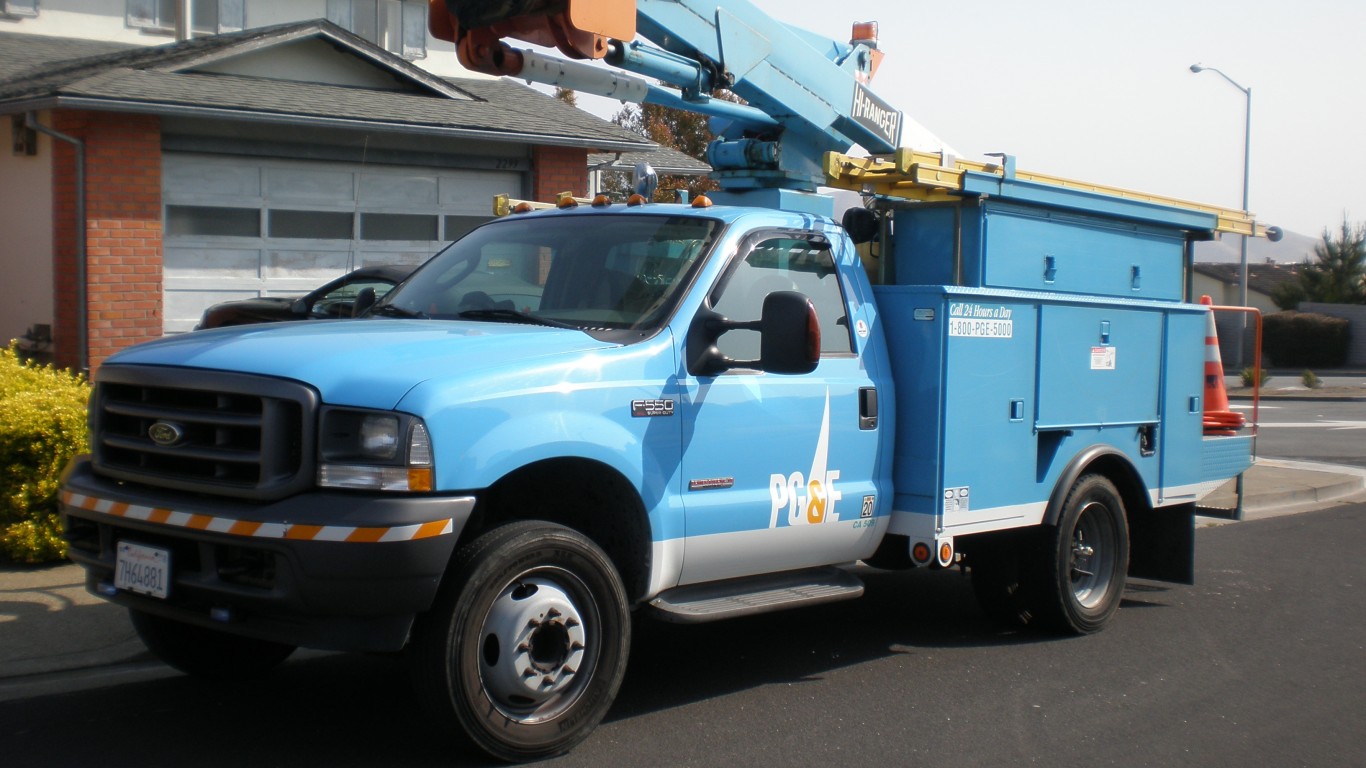
Now the PG&E Corp. (NYSE: PCG) has filed for bankruptcy protection and several asset management firms have either objected to the filing or say they are prepared to buy convertible debt in the company, maybe it’s time to look at what distressed equity (debt) investors might be looking forward to.
Analysts at Morgan Stanley have applied an analysis tool to six different scenarios that might result from the filing. The tool also allowed the analysts factor in variables like how like it might take to reach a resolution, damage levels from the wildfires, potential penalties to PG&E’s natural gas business, and the potential valuation of the company’s various businesses.
Just to refresh our memories: PG&E’s filing listed some $51 billion in debt and $71 billion in assets. The overhang is the still unknown amount that the 2017 and 2018 wildfires will add to those liabilities.
Here is an example Morgan Stanley ran through its scenario analysis tool on six different outcomes. Inverse condemnation in the analyses refers to the government taking of property without payment
1A. Municipalize electric distribution, sell gas utility to pay wildfire claims
> Time required to complete this scenario: 2.5 years
> Present value of PG&E stock under this scenario: $26.84
1B. Municipalize the entire holding company, hold assets in trust to pay wildfire claims
> Time required to complete this scenario: 3.5 years
> Present value of PG&E stock under this scenario: $8.78
2. Regain investor confidence from either a stress test applied this year and in the future or legislative action to eliminate inverse condemnation without asset separation
> Time required to complete this scenario: 2 years
> Present value of PG&E stock under this scenario: $32.84
3. Court win reverses inverse condemnation, PG&E separates state from federal assets
> Time required to complete this scenario: 3.5 years
> Present value of PG&E stock under this scenario: $25.52
4. State guarantees PG&E debt issuances but leaves the company’s equity exposed to future wildfire risk
> Time required to complete this scenario: 2 years
> Present value of PG&E stock under this scenario: $11.23
5. No lasting solution future risk forces PG&E to accept expensive non-investment grade debt
> Time required to complete this scenario: 3 years
> Present value of PG&E stock under this scenario: $8.72
If the state municipalizes only the electric distribution utility and sells off the gas utility (option 1A), the present value of PG&E stock would be much higher than if the state of California municipalized the entire company (option 1B).
Option 2 yields the highest present value for the stock, but relies on a finding that while PG&E equipment may be responsible for the Camp Fire, Morgan Stanley believes it is most likely that the utility will not be responsible for damages arising from the fire because the analysts “do not see evidence of negligence.” That means the liabilities can be passed onto to PG&E customers, not shareholders.
Morgan Stanley believes either option 1A or 1B is the most likely outcome and that options 2, 4, and 5 are the least likely. If PG&E and the state of California cannot reach an agreement then option 3 or option 5 becomes the most likely possibility.
PG&E stock added more than 8% Tuesday, the day of its bankruptcy filing. Shares traded down about 0.5% Wednesday afternoon at $13.92.
Investing in distressed assets or debt is tricky and not for the faint of heart. In this case, with the state heavily involved in five of the six scenarios, the uncertainty may be even higher. But if, for example, option 1A prevails, buying the stock today effectively doubles the value of the investment immediately even though you may have to wait years to cash in. Then there’s, the opportunity cost … Like we said, not for the faint of heart or the impatient.
Thank you for reading! Have some feedback for us?
Contact the 24/7 Wall St. editorial team.
